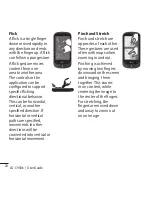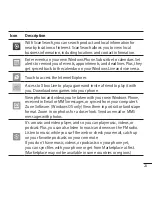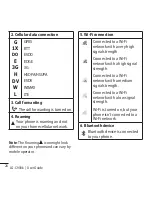
11
car, practice good common sense and
remember the following tips:
• Use a hands free device. If
possible, add an additional layer
of convenience and safety to your
wireless phone with one of the many
hands free accessories available
today.
• Let the person you are speaking with
know you are driving; if necessary,
suspend the call in heavy traffic or
hazardous weather conditions.
B
Use your wireless phone to call
emergency services for yourself or
others.
In the case of fire, traffic accident or
medical emergencies;
• Australia: Dial 0-0-0,
• New Zealand: Dial 1-1-1,
• International: Dial 1-1-2,
• other local emergency number.
Remember, it is a free call on your
wireless phone for emergency services.
B
Use your wireless phone to help
others in emergencies, if you see
an accident in progress or other
serious emergency where lives are in
danger, call the emergency number,
as you would want others to do
for you.
• Do not take notes or look up phone
numbers while driving. Jotting down
a “to do” list or flipping through your
address book takes attention away
from your primary responsibility,
driving safely.
• If possible, place calls when you are
not moving or before pulling into
traffic. Try to plan calls when you will
not be driving.
• Do not engage in stressful or
emotional conversations that may
be distracting. Make people you are
talking with aware you are driving
and suspend conversations that
have the potential to divert your
attention from the road.














































